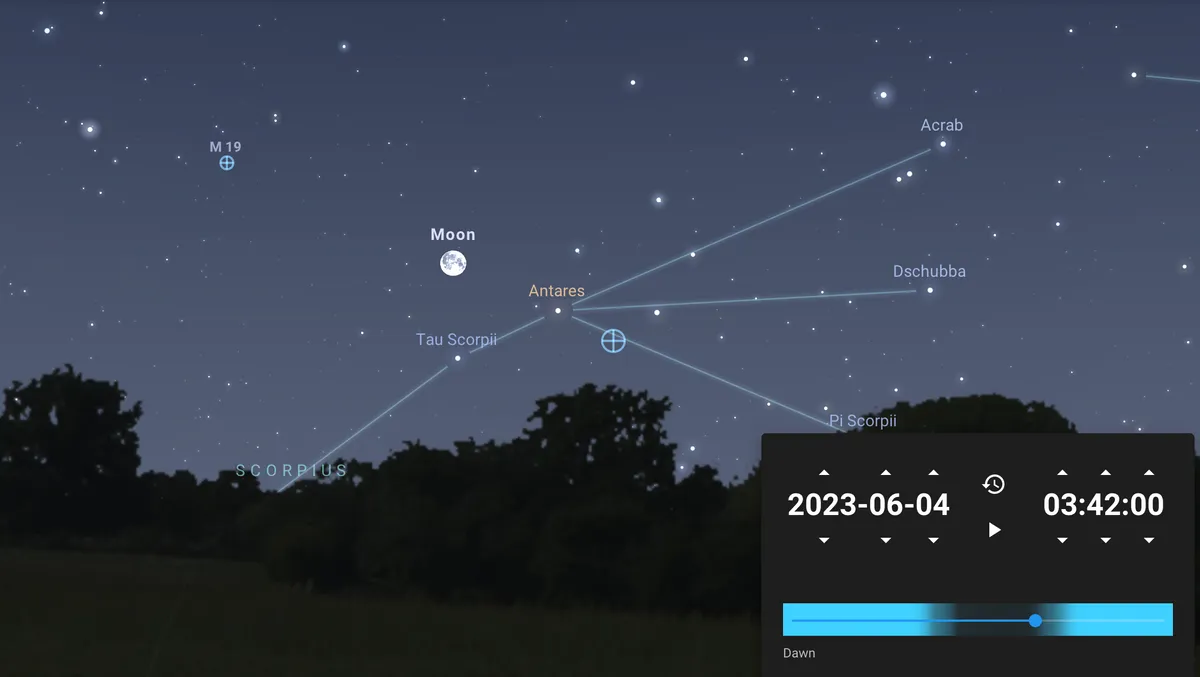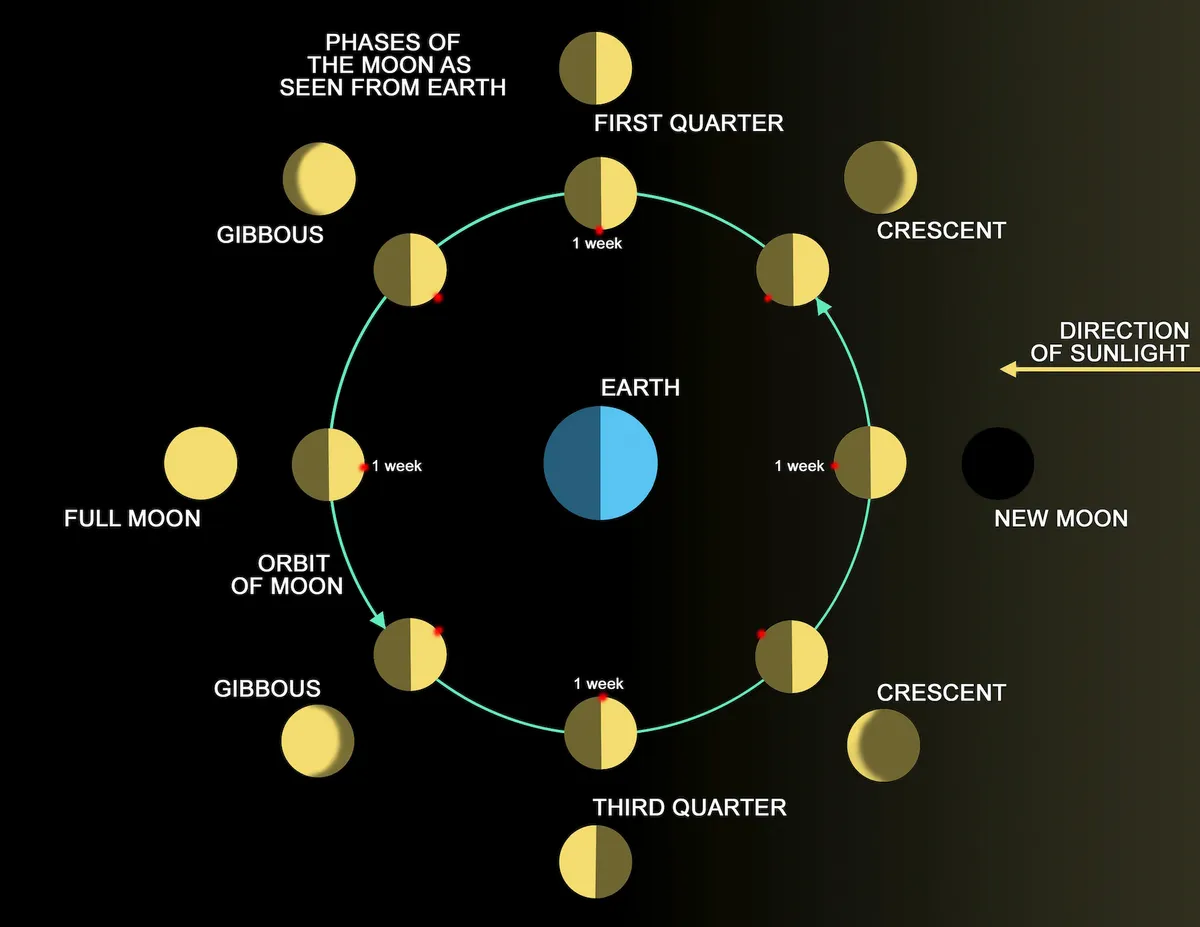The evenings are warm and the solstice is fast approaching. And with the full Moon making its appearence with the setting Sun, it's the ideal time of year to kick back and look to our nearest celestial neighbour.
But when exactly can you see the Strawberry Moon? Which constellation will it appear in? And, what's the best time to view it? Answers to these questions, and more, are below.
If you’re looking forward to clear nights this year, why not plan ahead with our full Moon UK calendarandastronomy for beginners guide? And if you want to learn how to navigate the night sky, start with a recognisable feature – like the Plough asterism in the constellation Ursa Major – and learn how to star hop with our beginner's guide.
When can I see the Strawberry Moon 2023?
The Strawberry Moon will be visible in the evening of Saturday 3 June 2023, going into the morning of Sunday 4 June 2023, in the UK and around the world.
The Strawberry Moon will be in the constellation Scorpius, close to the binary star, Antares.

On Saturday 3 June 2023, the full Strawberry Moon will rise at 9:01pm BST (8:21pm EDT) in the southeast and set at 4:26am (5:24am EDT) in the southwest the next morning.
The Strawberry Moon this year will reach peak illumination at 3:42am BST in the morning of Saturday 4 June (11:43pm EDT 3 June).
The day before full, on 3 June, the Moon is 1.5 degrees north of Antares in Scorpius. Then, by the time it reaches its waning gibbous phase on 9 June, it will be just 3 degrees south of a bright Saturn in Aquarius.
The Moon will skim past the planets in turn:
9 June, 8:23am: 3 degrees south of Saturn
11 June, 7:46am: 2 degrees south of Neptune
14 June, 6:35am: 1.5 degrees north of Jupiter
15 June, 9:54am: 2 degrees north of Uranus
22 June, 00:48am: 3.7 degrees north of Venus
22 June, 10:09am: 3.8 degrees north of Mars
When is the best time to see the Strawberry Moon?
The best time to see the Strawberry Moon will be either just after moonrise at 9:01pm BST on 3 June while the practically-full Moon is still low on the horizon, or – for you early birds – when the Moon reaches peak illumination at 3:42am, just before dawn on 4 June.
Although not technically full at moonrise, our human eyes won't be able to discern the difference. And as well as the Moon Illusion (where the Moon looks larger closer to the horizon), we might also be permitted a backdrop of pastel hues, as the bright Moon rises with the sunset.
If you are unable to see the Strawberry Moon at its peak, it will also appear full for a day on either side of full.
Why is it called a Strawberry Moon?
Sadly, there's no eclipse this month, so the Moon won't be red. However, for much of the northern hemisphere, June is the month when strawberries begin to ripen – June to September being 'strawberry season'.
In North America, the Algonquian tribes used the name because it heralded the time when wild strawberries were ripe for picking.
Although generally attributed to Native American tribes, assigning unique names to every full Moon has become popular around the world, particularly on social media. Historically, such names would have served as a vital method to monitor the changing seasons, dividing the year into manageable months.
June's full Moon is also known as the Rose Moon, Lotus Moon, and the Mead Moon.
Is the Strawberry Moon 2023 a supermoon?
No, the Strawberry Moon 2023 is not a supermoon.
A supermoon occurs when the Moon, which is orbiting the Earth in an elliptical orbit, is at its closest point to Earth along this orbit (called perigee). When the Moon reaches perigee at the same time as a full Moon, it appears larger and a little brighter than an average full Moon, giving us a supermoon. The technical term for a supermoon is a perigee-syzygy Moon.
A supermoon is an unofficial classification for when the Moon is situated 360,000km (or less) away from Earth in its orbital path, and we'll often see two or three full supermoons in a row, giving us a 'supermoon season'.
The opposite is also true. When the full Moon is at the furthest point away from Earth along this orbit – this is called the apogee – we get a micromoon as the Moon appears smaller.
The first supermoon of 2023 will be 1 August, with a rare blue supermoon at the end of the month, on 31 August. The July (361,934km) and September (361,552km) Moons come pretty close, so although will appear bigger and brighter to us they are slightly over the 360,000km distance. That being said, when taking into account the preceding or succeeding apogee and perigee, the July and September Moons do classify as a supermoon.
How often do full Moons occur?
Full Moons occur every 29.53 days. Or, 29 days, 12 hours, 44 minutes, and 3 seconds - if you want the exact timings. It's also known as a synodic month ('synodic' being a Greek word meaning 'conjunction'), and is calculated by how long it takes the Moon to make one full orbit of the Earth - completing one lunar phase cycle. The lunar cycle is measured from new Moon to new Moon.

"We call it the full Moon when the Moon is fully illuminated by the Sun. That only happens when the Moon is completely opposite to the Sun in the sky – so you always see the full Moon rising just as the Sun sets,"explainsDr Darren Baskill,astronomy lecturer at the University of Sussex.
And this is why the Moon rises later as we head into the summer months.
We would usually have 12 full Moons in a calendar year, and they occur when the Moon is fully illuminated by the Sun. This happens when the Earth is located directly between the Sun and the Moon.
Because the lunar cycle takes a little under one calendar month, we sometimes get 13 full Moons in a year, which occurs around every 2-3 years. This means that in one of the 12 months will get two full Moons, and this extra full Moon is known as a ‘blue Moon’. The next blue Moon will occur this summer, in August 2023. Similarly, we sometimes get two new Moons in a month, and this extra new Moon is known as ablack Moon.
About our expert, Dr Darren Baskill
Darren is an outreach officer and lecturer in the department of physics and astronomy at the University of Sussex. He previously lectured at the Royal Observatory Greenwich, where he also initiated the annual Astronomy Photographer of the Year competition.
Read more about the Moon: